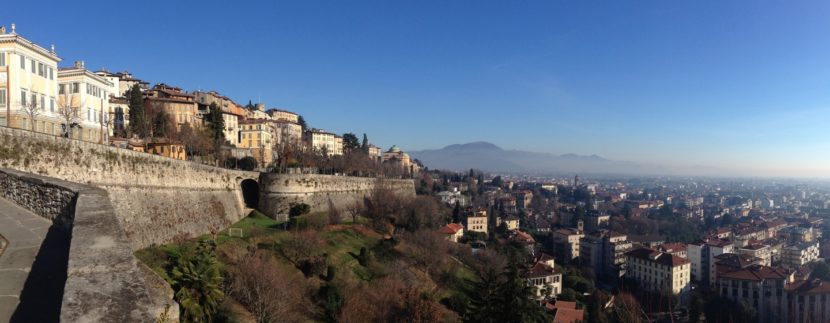The Venetian Walls: UNESCO World Heritage

Living in the surroundings of Bergamo means not only being able to enjoy its wonderful hilly landscapes that, in every season, are painted with different colors but also having within reach some of the legacies of the past that make Italy an ideal nation to visit for foreign tourism (and not only).
It is worth considering that some continents, such as America and Australia, certainly have a much more recent history than Europe, which cannot compete with millennia of contaminations, dominations, empires, and kingdoms that, in the meantime, have succeeded in our territories.
For example, among the UNESCO World Heritage Sites, we find the incredible Venetian Walls, witnesses of the ancient dominance of Venice over the city of Bergamo and an imposing defensive system.
The History
What is offered to the visitor is a perfectly intact and well-preserved curtain wall that has crossed, with the people of Bergamo, centuries of history, emerging unscathed even from wars.
The history of the city, like that of the entire Italian territory, is lost in time, reaching back to various centuries before Christ; on the other hand, its hilly position has always provided an excellent strategic-military destination, so much so that historical sources attest that Bergamo was fortified even in Roman times. However, to date, the medieval walls of the 10th century remain a more evident relic, supplanting and overlapping the previous ones.
After being an important Lombard duchy and later restoring the monarchy, Bergamo became the center of a Frankish county, and from that period dates the construction of the castle of San Vigilio, a military bulwark of the city.
The communal era was a succession of two centuries of fratricidal struggles between Guelphs and Ghibellines (a historical period that also inspired Shakespeare’s famous tragedy, “Romeo and Juliet”) after which, finally, a bit of long-awaited tranquility came with Giovanni del Luxembourg, King of Bohemia, in 1331.
It is precisely in this year that the construction of the first fortress began on the hill of Sant’Eufemia, under the orders of the king’s vicar, Guglielmo di Castelbarco. However, it was necessary to wait for the entrance of the Visconti to witness the completion of the work and the completed work.
The ancient noble family, in fact, succeeded the King of Bohemia in the dominion over Bergamo, and, realizing the actual importance of that imposing architectural work, continued and strengthened its construction, including, on the San Giovanni hill, a new military complex, called “la Cittadella,” with the aim of defending the city through a real fortified enclosure.
The walls ended up including not only the city center of the time but also more peripheral territories: in the end, they were called “Muraine,” and were completed around 1350 and expanded, as mentioned, by 1375.
Soon, the structure also became a customs border, acquiring a role in trade and contacts between peoples, and being further expanded to protect the village of San Lorenzo, by the Venetians (whose dominion over the territory had succeeded the previous one in 1428). These additional works became necessary because, on the one hand, the city was prey to the Visconti, who had not accepted defeat, and on the other hand, the French and Spanish were pressing to invade its territory.
During this phase, the belt of bastions 6200 meters long that we know today was built (which made Bergamo an impregnable fortress), and a defensive tower, called the Galgario. Many workers, lagoon architects, and soldiers were employed, and many buildings were demolished (about 250 are said), including farms, houses, workshops, and even places of worship, including the ancient cathedral of Sant’Alessandro, which housed the relics of the patron saint, and a convent. This, as predictable, did not please the local clergy, which immediately provided to launch as many anathemas as religious buildings were involved; anathemas that were only stopped with a large financial resource to contain them to save those who worked on this colossal enterprise. Some sections already present from Roman times were, of course, “recycled,” some of which, however, in the centuries that followed, were replaced because they were in poor condition.
It took over 27 years and 1 million ducats to complete everything, plus, of course, the extra costs resulting from the aforementioned excommunications.
Although the walls have never played a military role in reality, they became part of the city’s civil life, undergoing a subsequent period of decline.
In 1859, they were crossed by Garibaldi (so much so that a gate was renamed after him) when the city was annexed to Piedmont but, in 1901, the “Muraine” were demolished with the abolition of the customs: the merloned stretch with the original loopholes remains on via Lapacano, and, in the lower city, the tower.
In recent years (between 1976 and 1984), the walls have been rediscovered, restored, and cleaned, becoming a classic walk (both by car and on foot) for Berg


